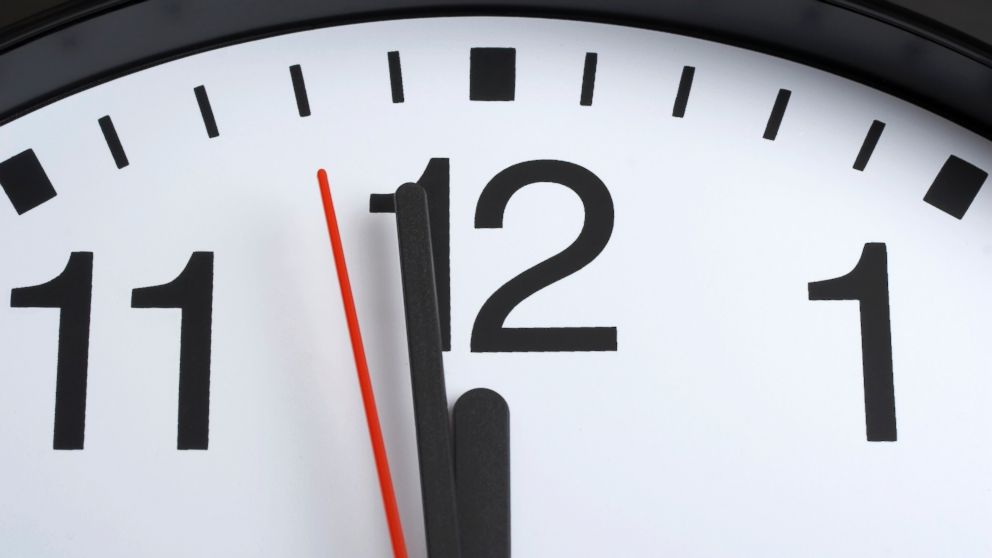

#Real time clock with seconds install
The I2C bus provides power, clock and data signals, so only four connections are required.īefore you hook up your real time clock module it would be a good idea to install the coin cell battery, if you haven’t already. Tiny RTC Basic Arduino HookupĪs the Tiny RTC uses the I2C bus it is very easy to hook it up to an Arduino. Now that you have seen the module let’s hook it up to an Arduino.

#Real time clock with seconds serial
SDA – The I2C Serial Data or SDA connection.DS – Device Select, this allows you to enable or disable the device.The device has the following connections: The module has two sets of connectors, the I2C connections are repeated on both of them and you can use either of them to make your connections. The Tiny RTC module interfaces using the I2C bus. Consumes less than 500nA in battery backup mode.Has battery backup with automatic power failure detection and switchover.Counts date, day of week, month and year.Counts time in hours, minutes and seconds.

The Tiny RTC module has the following features: The module uses a widely available coin cell battery. If you order your Tiny RTC online from an overseas source it likely won’t have the battery installed, this is due to international shipping regulations regarding lithium batteries. It also has a battery holder for a coin cell, this sits underneath the board.

The board contains the DS1307 chip and all the support electronics, including the timing crystal. I will be using a module called the “Tiny RTC”, this is a very common and inexpensive module. They can be easily modified to use the DS3231. The experiment I’ll be performing today use a module that has a DS1307 chip. Like the DS3231 it also communicates using the I2C bus, however, this chip requires an external timing crystal. This chip has its own internal crystal oscillator, so no external crystal is required.Īnother very popular chip is the DS1307. One chip is the DS3231, a highly accurate real time clock that uses an I2C interface. There are a few very popular real time clock integrated circuits that are used in real time clock modules. The problem with 2038 is likely to be resolved within the next 19 years, I suspect just shifting to a 64-bit standard would resolve this for several millennia! DS1307 Real Time Clock The issue with leap seconds is generally taken care of by synchronizing your real time clock with a local or network time source, which itself will have compensated for leap seconds. This is sometimes referred to as the “Year 2038 problem”. It uses a 32-bit numbering system and will run out of digits on January 19, 2038.It does not take into account leap seconds, and there have been several of these since January 1, 1970.Unix time is useful when you are writing a program that needs to calculate the time difference between two dates and times, as it involves simple addition and subtraction, without having to worry about days, months and years. Unix time is also called “POSIX Time” or “UNIX Epoch time”. If you are on Linux (or at the terminal on a Mac, which uses Unix as its underlying operating system) you can type “ date +%s ” to get the current Unix time. Unix time is the number of seconds that have elapsed since midnight Janu(which was a Thursday if you’re interested). Most computers keep time in what might seem to be a strange system, they use “ Unix time ”. Most real time clock modules have provision for a battery backup, so that they can keep time when the rest of the system is powered down. The device you are using to read this article likely has a real time clock and if you are attached to the Internet you probably are synchronizing this to a network time server (if your device is a phone it may be time synchronized to your telephone companies carrier signal instead). It has its own oscillator that it uses to count time and it has registers that allow you to set the current time and date. Real Time ClocksĪ “real time clock” is essentially a digital clock whose output can be read by a computer or microcontroller. To do that you’ll need to add an external component – a “real time clock”. But you can’t get the time of day or date from them. You can use the above functions to insert time delays or measure elapsed time. The micros function, like the millis function, except it measures the time the Arduino has been running in microseconds.The millis function, which counts the elapsed milliseconds since the Arduino was powered up or reset.The delayMicroseconds function which is like the delay function except you specify the time in microseconds.The delay function, which can delay program execution for a specified number of milliseconds.There are several time-related functions you can use when programming an Arduino: But there is one thing an Arduino cannot do – it can’t tell the time.


 0 kommentar(er)
0 kommentar(er)
